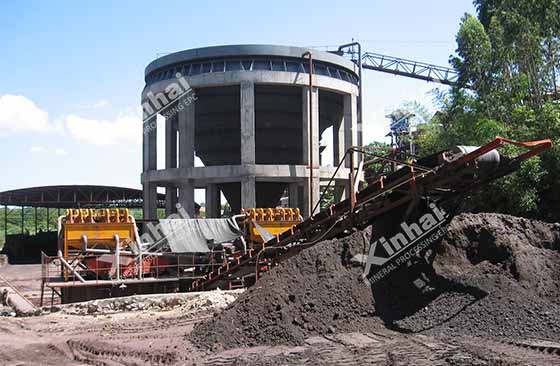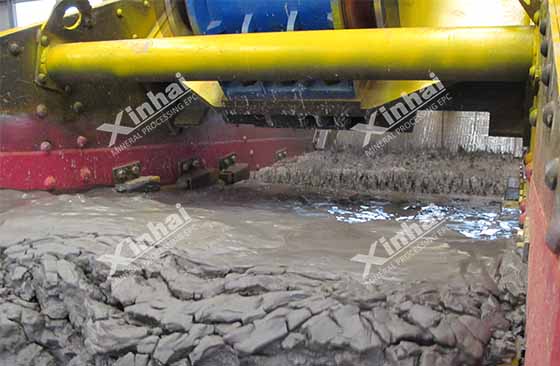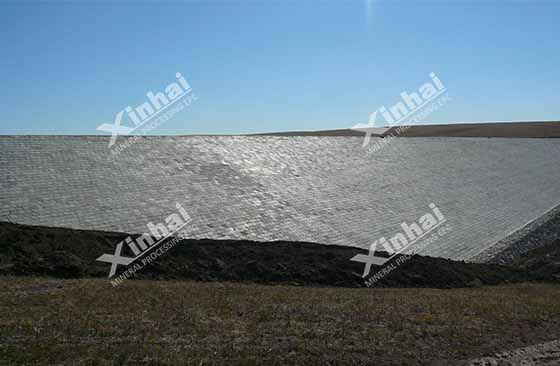

Warm Tip: If you want to know more details about equipment, solutions, etc, please click the button below for free consultation, or leave your requirements!
Tailings is a part, generated by mineral processing plant, which has a low content of useful components and cannot currently be used. It is the main component of industrial solid waste. Tailings processing is one of the important parts of mine production.
Why should we process tailings?
Generally, beneficiation plants use tailing dams to store tailings, and the toxic reagents, waste water, and heavy metal ions remaining in the tailings produced by the beneficiation process will cause pollution and ecological damage to the environment around the mine. At the same time, it will increase the safety hazard of tailings dam and induce the accidents such as landslide, debris flow and tailings dam break. Therefore, tailings processing has always been highly considered.
At present, tailings processing methods generally have three directions: tailings reprocessing, tailings dewatering and tailings filling goaf. Later we will explain these three methods separately.
Although the content of useful components in the tailings is relatively low, it can be recovered to a greater extent by using advanced technology and reasonable process to reconcentrate the tailings, so that the resources can be fully recovered and utilized, reduce the final output of tailings, and alleviate the pressure of tailings on the environment. At present, common tailings reprocessing methods include the following types:
Flotation process can be used to process tailings containing borax, zinc oxide, apatite and other minerals.
Due to the development of new reagents and new processes, some tailings produced by simple processes, especially old tailings, can be recovered by flotation.
The fine-grained minerals in the tailings can be recovered using new gravity separation equipment.
Many traditional new gravity separation equipment can be used in the reprocessing of fine and ultra-fine tailings after being invented and improved, such as vertical centrifugal concentrator, compound field shaker, compound field centrifuge and so on.
This technology mainly uses the biochemical action of microorganisms to improve the properties of tailings, and extracts harmful metal ions in the tailings through microbial leaching or microbial mineralization to avoid environmental pollution.

In the separation stage, the slurry often contains a lot of water, and the high water content of tailings is easy to lead to the accident of tailings dam break. Therefore, the concentration and dewatering of tailings is also one of the important parts in the beneficiation plant. Common tailings dewatering processes include:
As a kind of equipment for solid-liquid separation by centrifugal force, hydrocyclone is characterized by small floor area and high underflow concentration. This type of concentration method mainly uses the hydrocyclone and thickener to form a series or closed circuit process to obtain a high concentration of concentrated product.
In the tailings treatment of gold mines, filter presses are widely used. This method has the characteristics of low water content of filter cake and the filtrate can be returned to use. However, due to the low processing capacity of single machine, it is difficult to be used for large-scale tailings dewatering alone.
The tailings dry stacking is a new dewatering process using patented equipment such as dehydration cyclones, high-efficiency high-frequency dewatering screens, and high-efficiency deep cone thickeners. It can reduce the water content in the tailings to less than 15%, save costs, and can effectively avoid environmental pollution.

Tailings filling goaf is the process of refilling the processed tailings waste material back into the goaf area, which can achieve the functions of protecting the landform and reducing the cost of the tailings dam. At present, there are two main methods for tailings filling goaf:
Full tailings cementing and filling technology uses dewatered tailings mixed with cement and coal ash to form filling aggregates, and uses the self-flow of pipes to send the filling slurry to the goaf area to achieve the purpose of filling the goaf.
High water consolidation full tailings filling technology is similar to the full tailings cementing and filling technology, except that the high water material is used as the cementing material instead of cement. This method uses A material mainly composed of aluminate and sulphoaluminate and B material mainly composed of anhydrite, quicklime and coagulant to be pulsed and transported respectively, and mixed before filling, which has the characteristics of fast setting speed.

The above three methods are the three directions of tailings processing. In the actual dressing plant, the specific tailings processing method needs to be determined according to the scale and investment of the dressing plant. It is recommended to consult with a beneficiation equipment supplier who is qualified in research and design of a beneficiation plant to choose the tailings processing method suitable for the beneficiation plant.
13 Methods of Tailings Processing
 0
0
 4810
4810


What Are the Differences Between CIP and CIL?
 11625
11625
 0
0